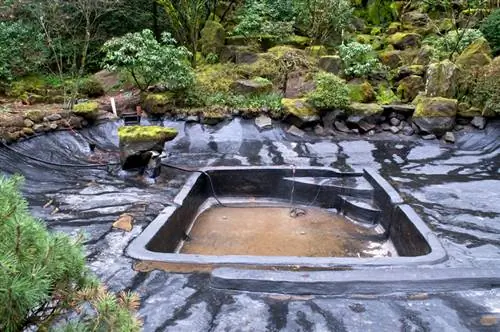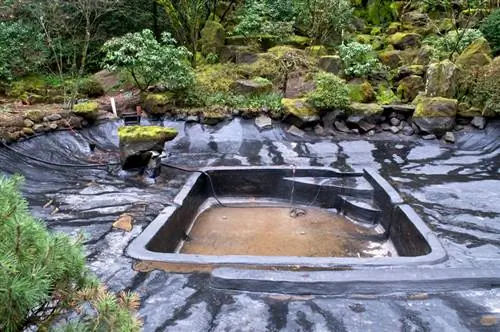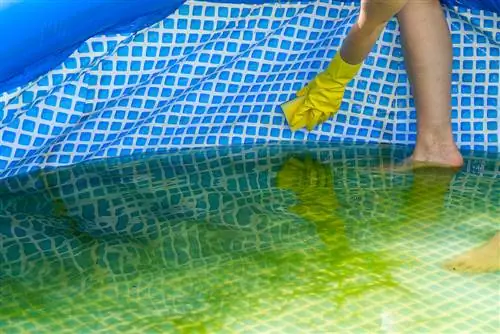- Author admin [email protected].
- Public 2023-12-16 16:46.
- Last modified 2025-01-23 11:21.
If you notice a loss of water in your pond, it is necessary to first find the leak or hole in the pond liner. You can read about the best way to do this and which methods work best in our article.

How do I find a hole in the pond liner?
To find a hole in the pond liner, you should first rule out alternative causes, narrow down the area and observe the falling water level. Clean and feel the pond liner in the damage area to locate the leak.
Identify leaks
Before you can repair a damaged area, you must first find it. This can often be quite tricky, especially with larger ponds.
To be on the safe side, you should first have safely ruled out all alternative causes for the water loss:
- Leak in the filter system
- Leaking hoses, brittle hoses or pipes
- Water loss into the ground (for example because the film was not pulled up far enough, the so-called capillary barrier)
- Water loss due to extreme evaporation (high temperatures, sedges or reeds on the edge of the bank promote evaporation)
Turn off all devices as a test. If the water loss stops, you can assume that the leak is most likely in some pipes and pipes or in the devices themselves.
If all of this has been safely ruled out, you actually have to look for the leak somewhere in the pond liner.
limit area
First you have to narrow down the area where the damage is located. This can be done well due to the falling water level. This measure makes sense because otherwise you would have to search the entire pond liner for the hole.
To do this, fill the pond completely and mark the water level on the pond liner at regular intervals (e.g. daily). It's best to use chalk for this.
If the water level drops more slowly or stops falling, you have found the damage area. The damage is then located somewhere between the water level and the last marking.
Clean the film with a soft cloth and feel it carefully. You should be able to feel any damage. Also check all seam connections in the relevant area for tightness.
You can usually recognize very large holes by the current: If the damage is quite massive, leaves and small objects are usually pulled directly to the hole. All you have to do is follow the path you take.
Tip
If the pond liner appears brittle and brittle (especially with PVC films), this can also be a cause of water loss. In this case, the film is completely leaking and must be replaced.






